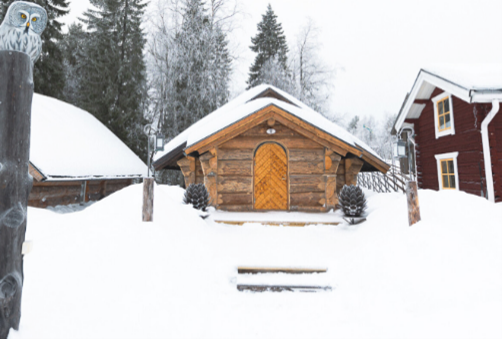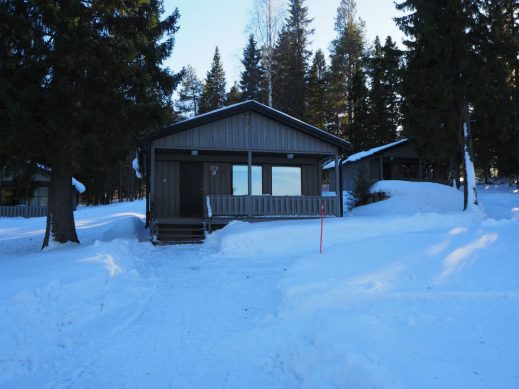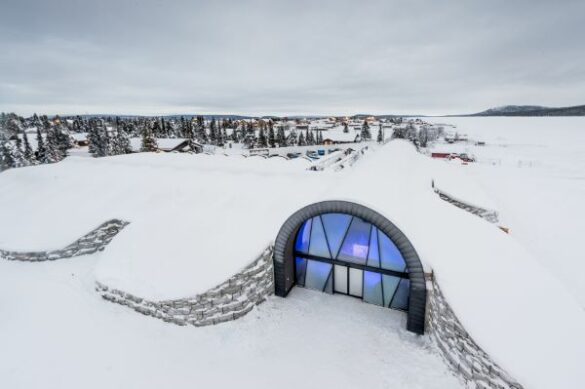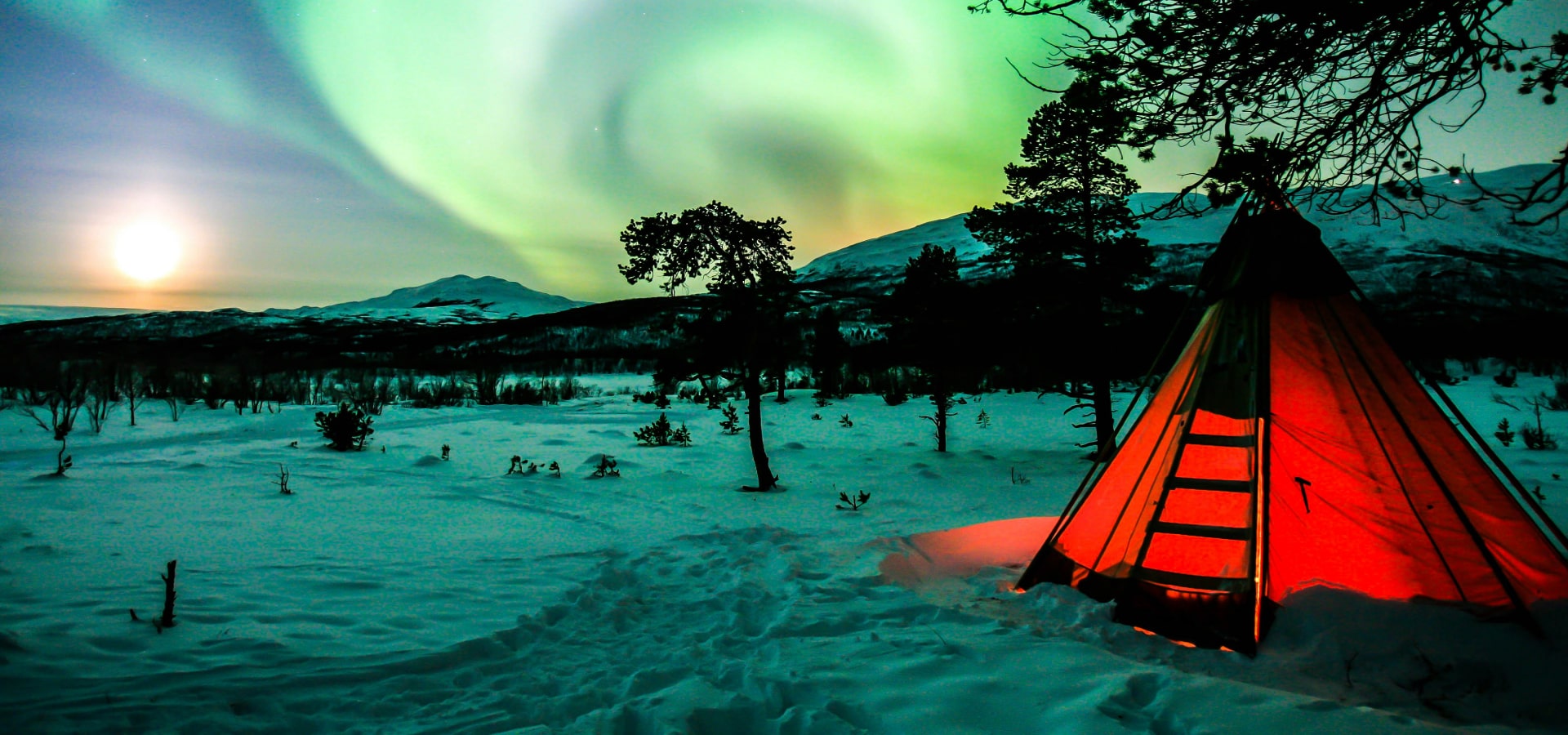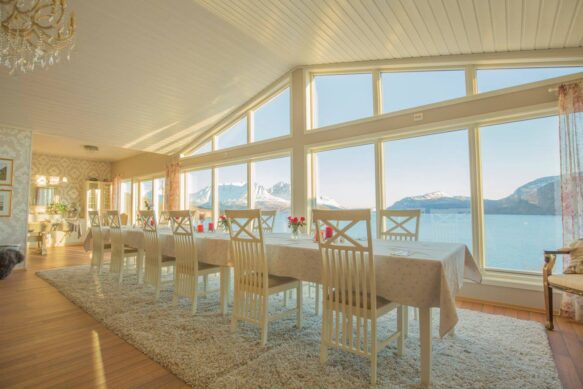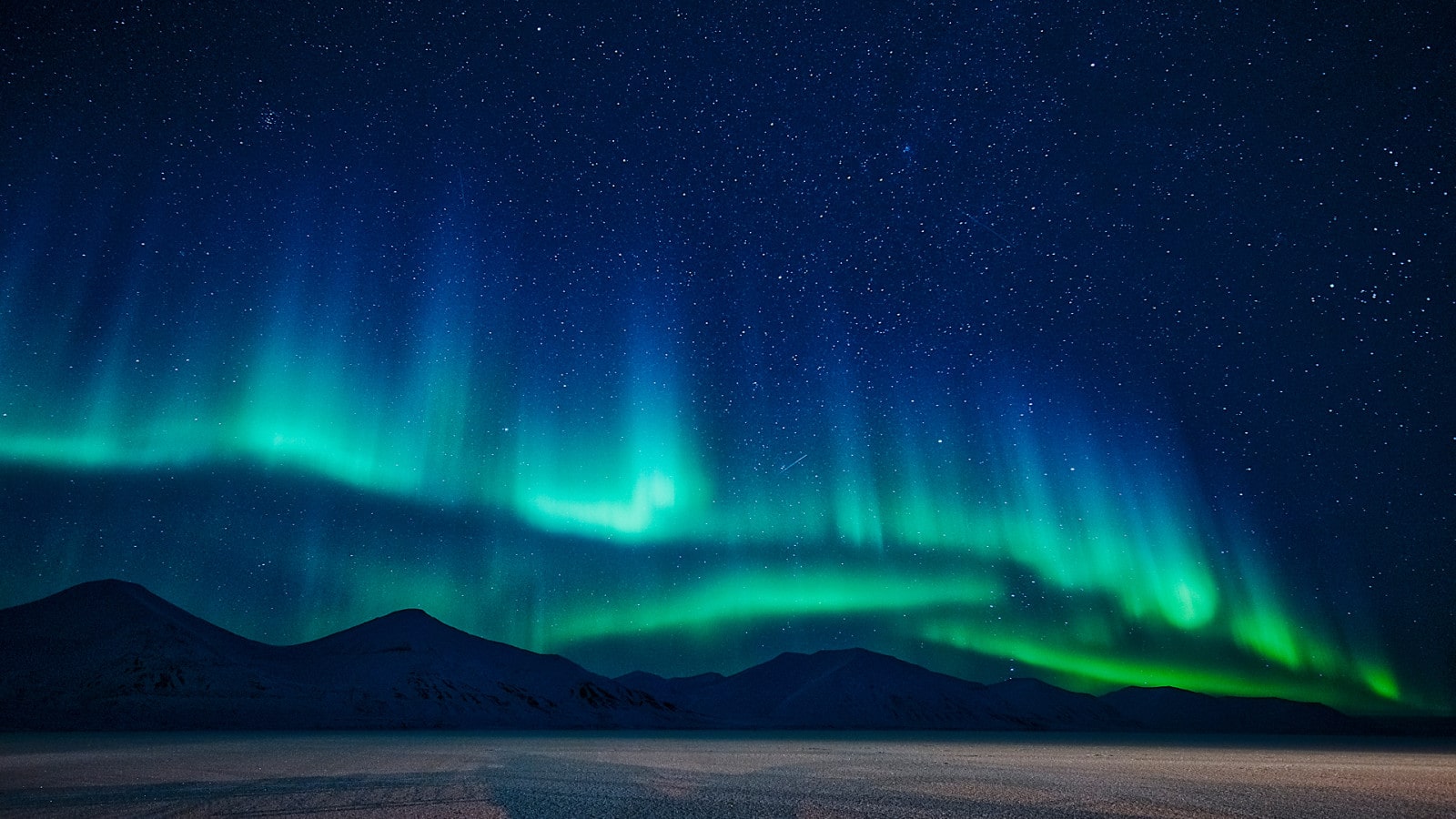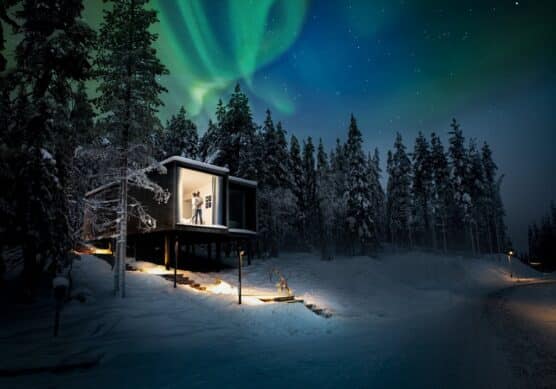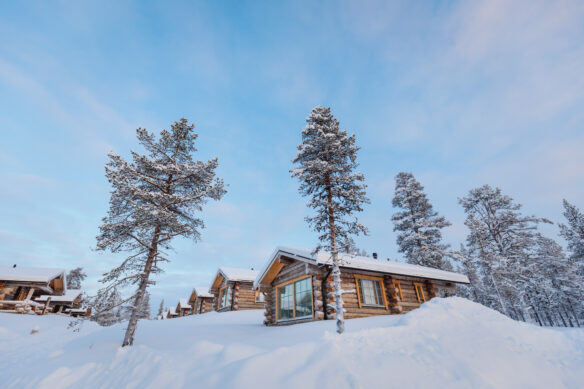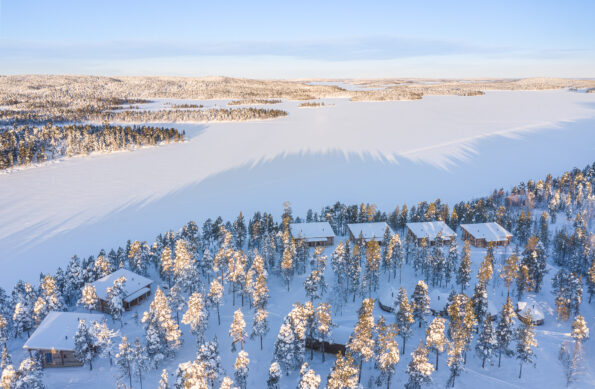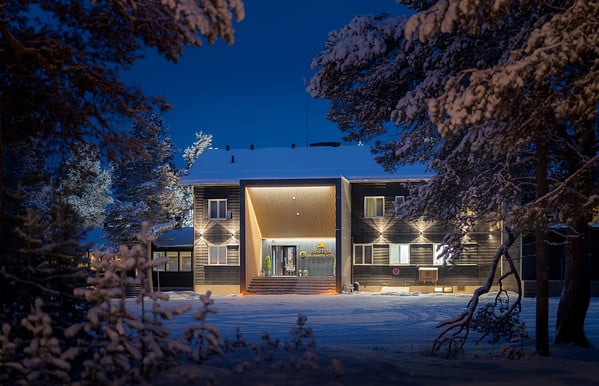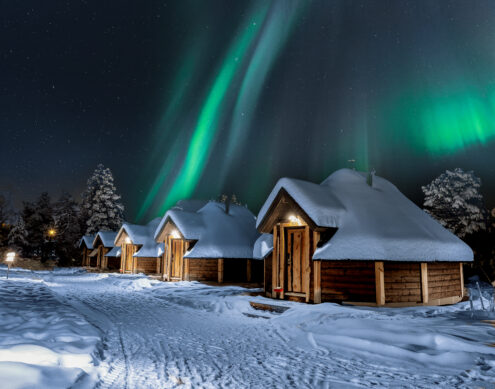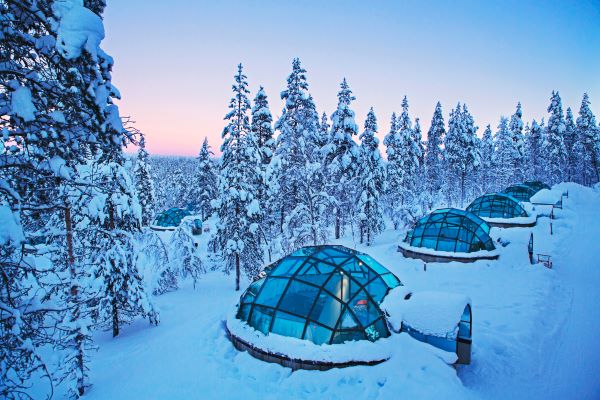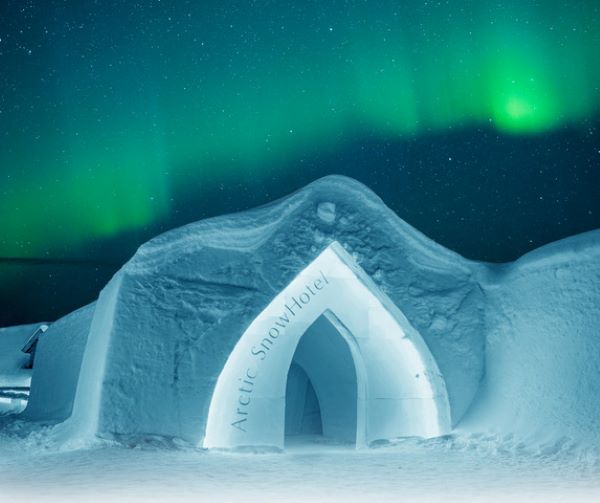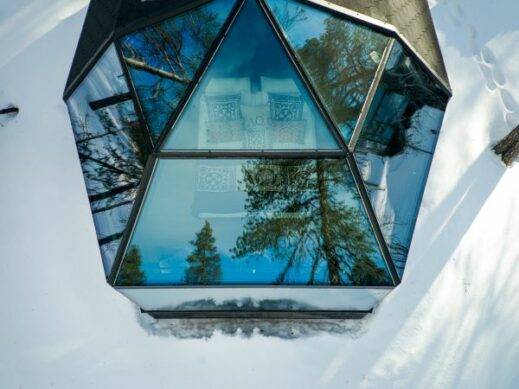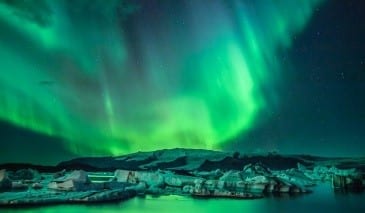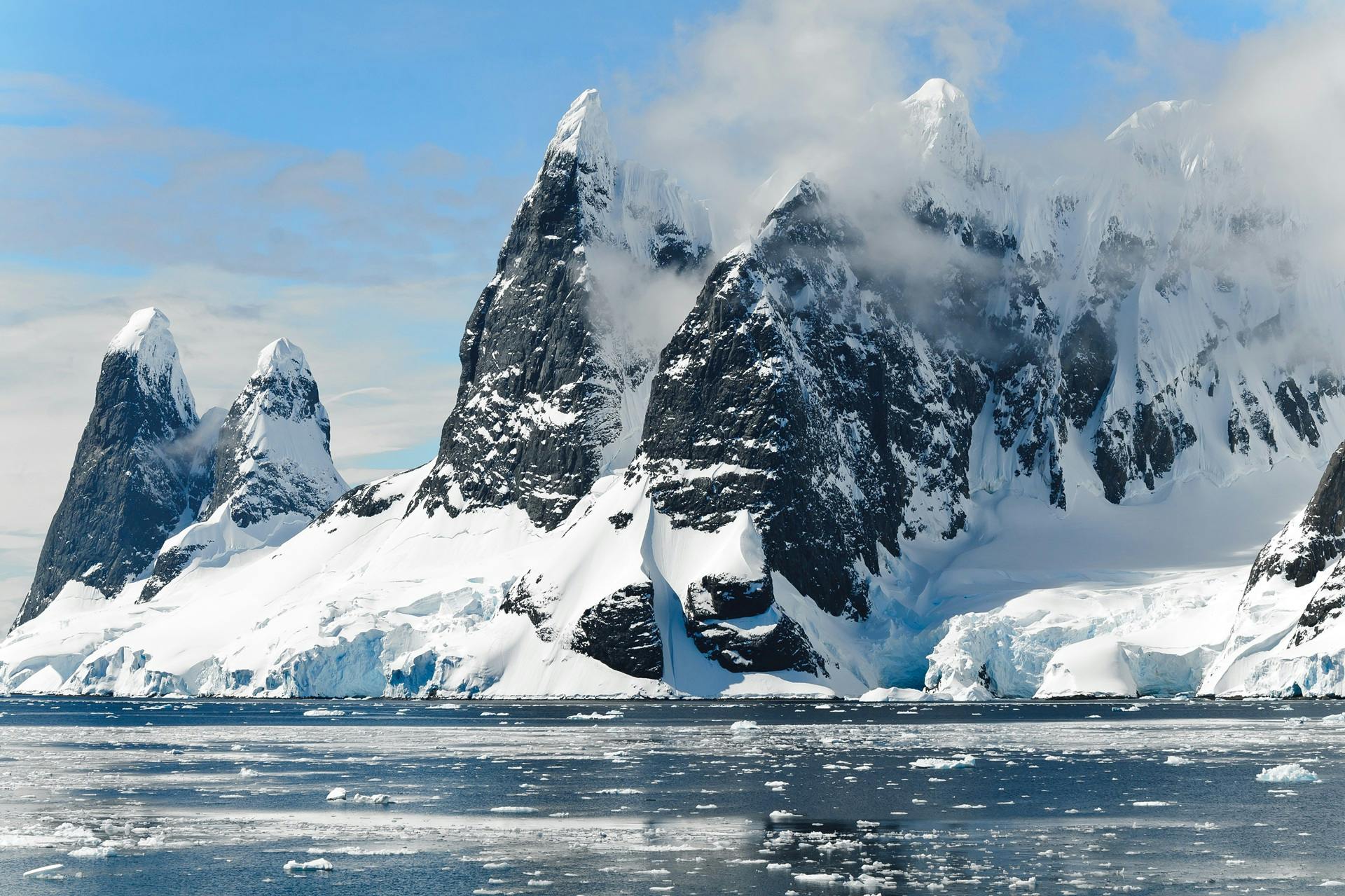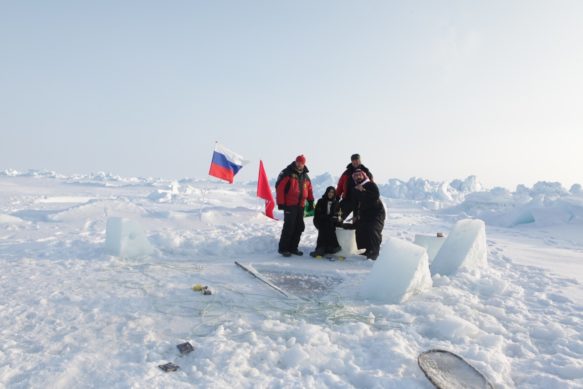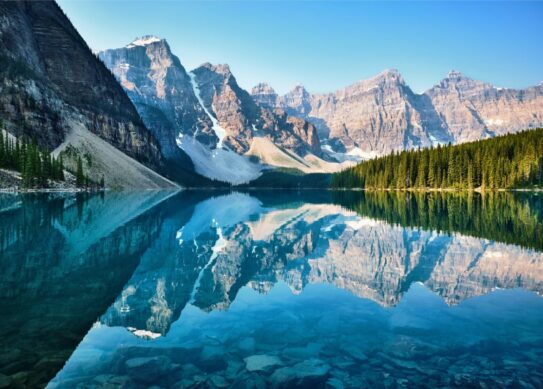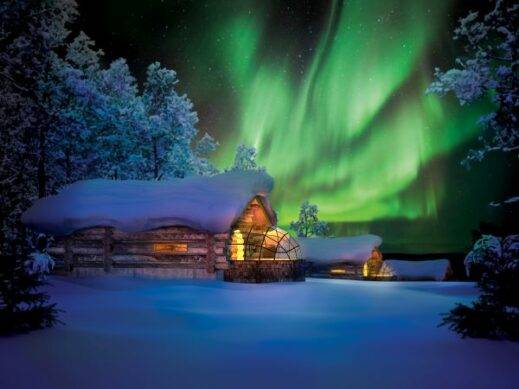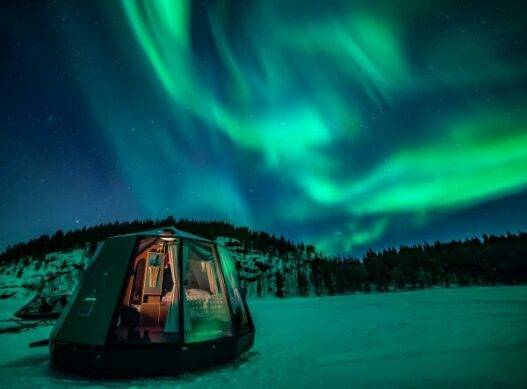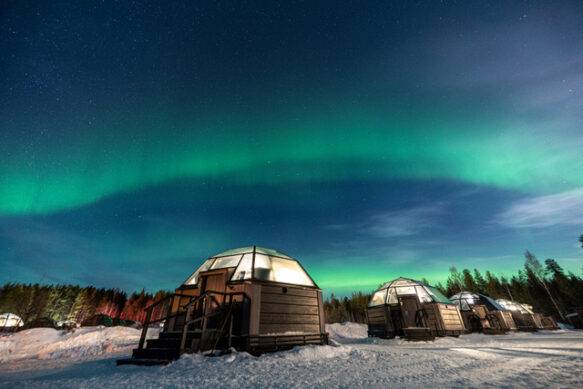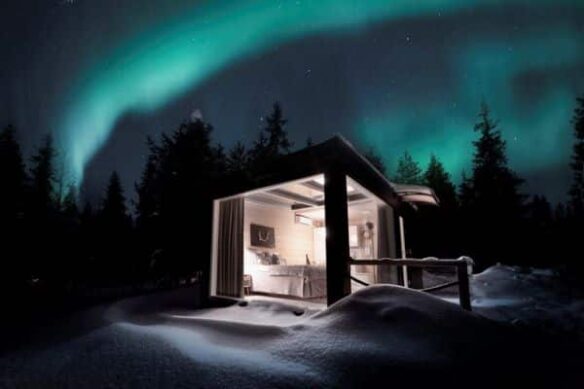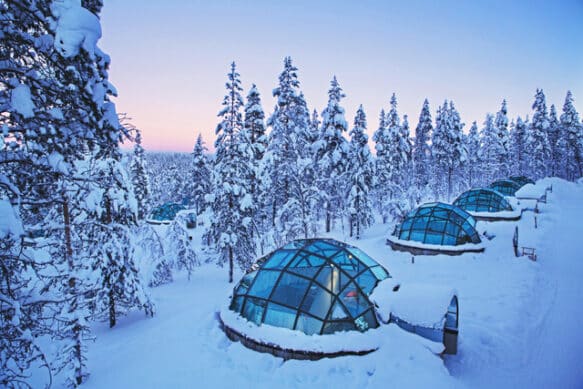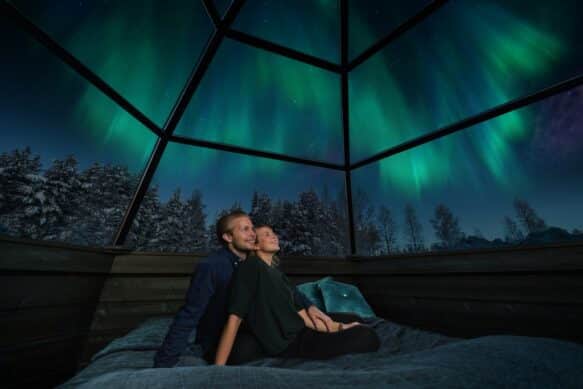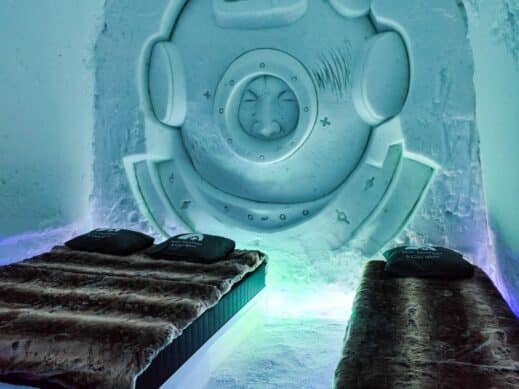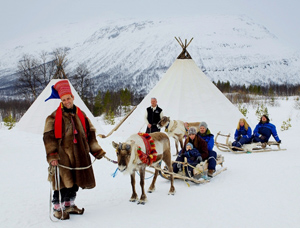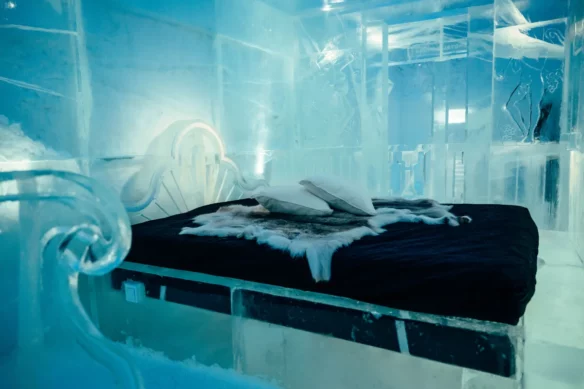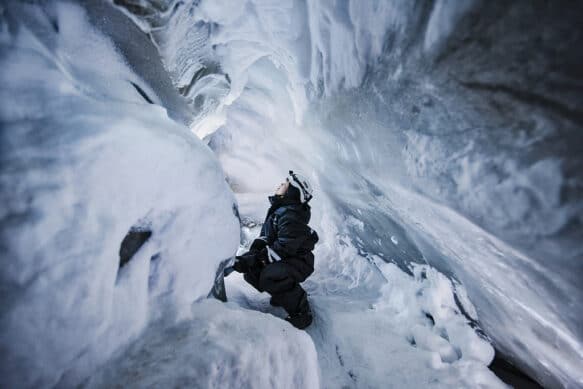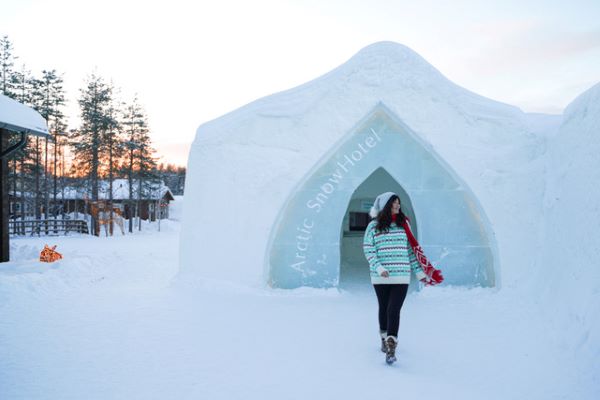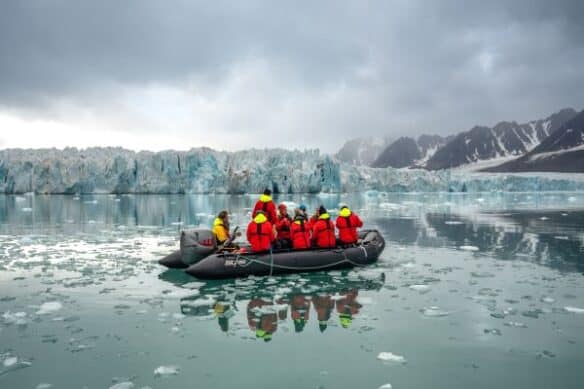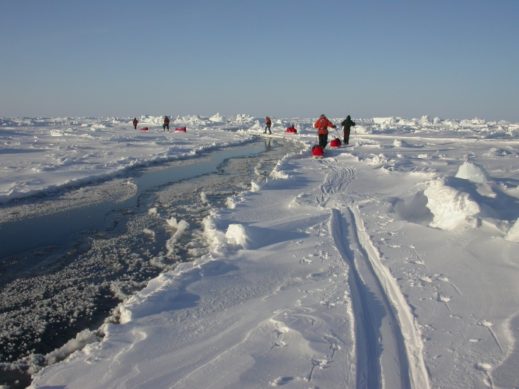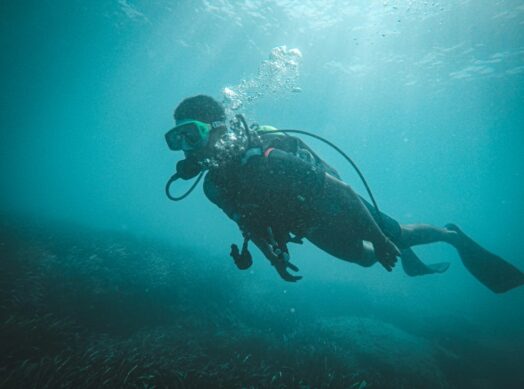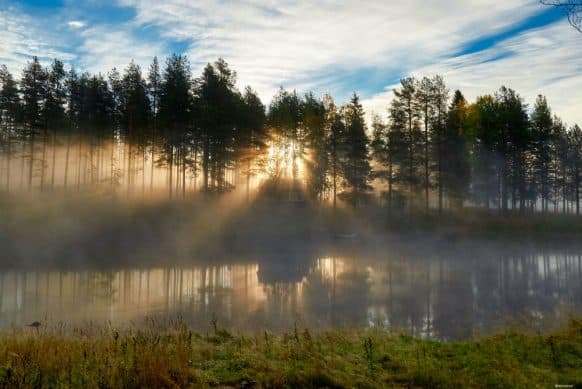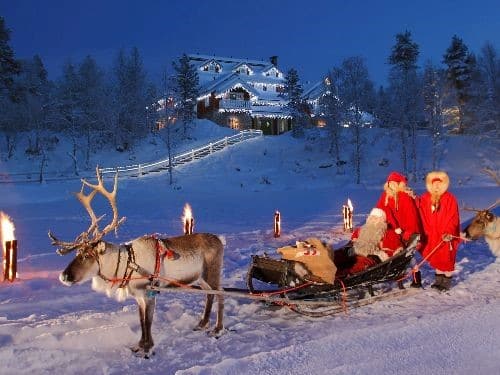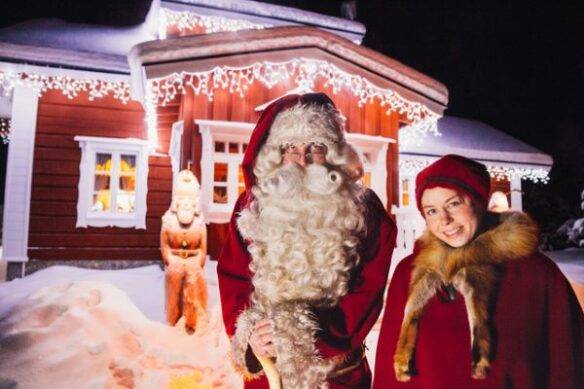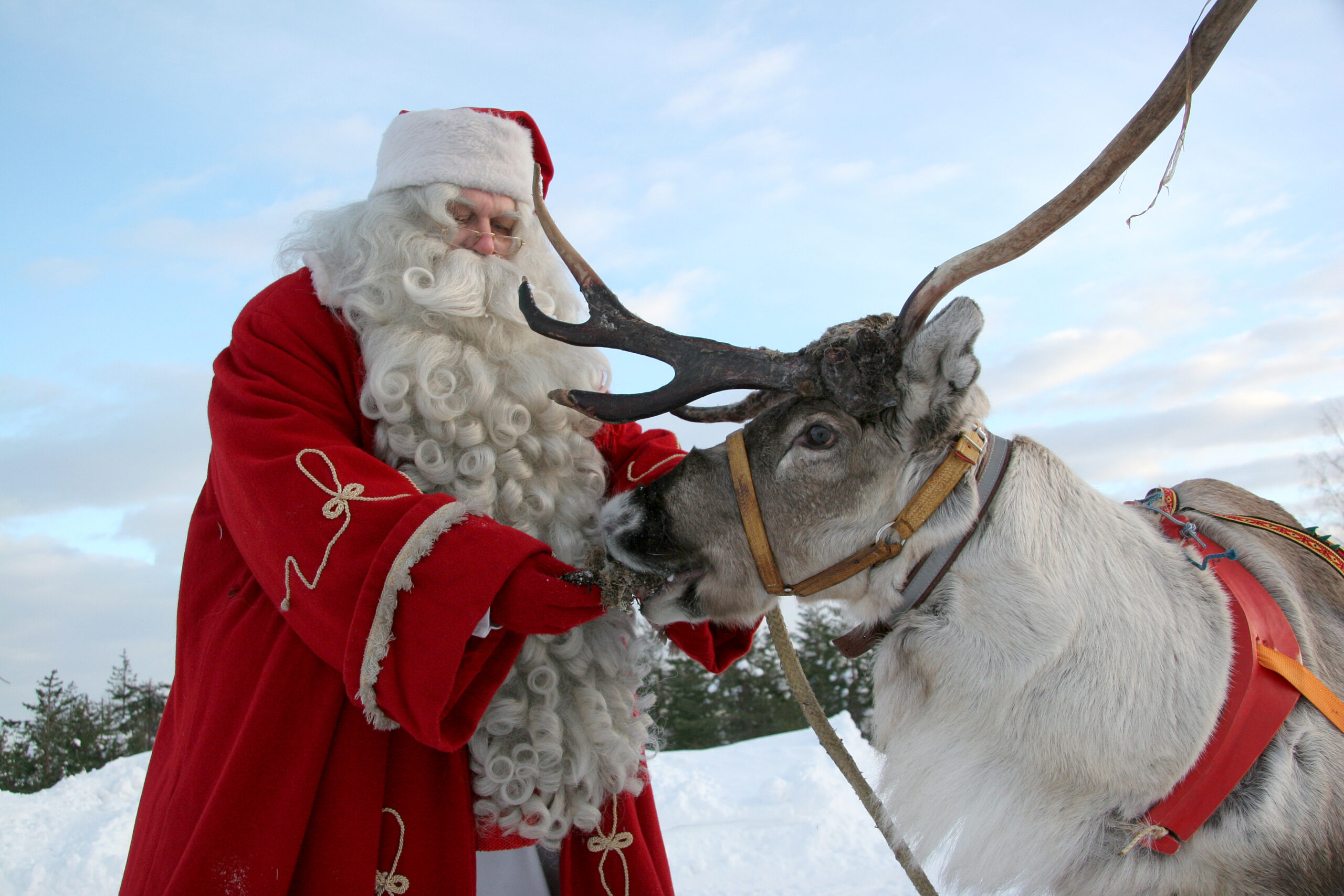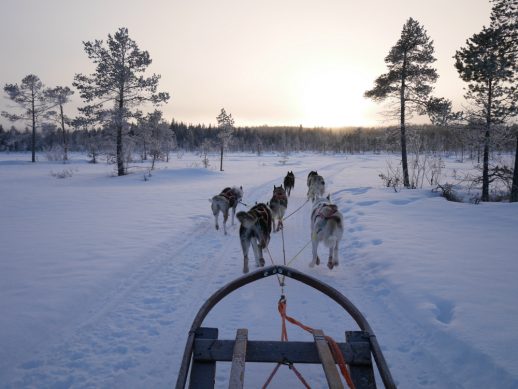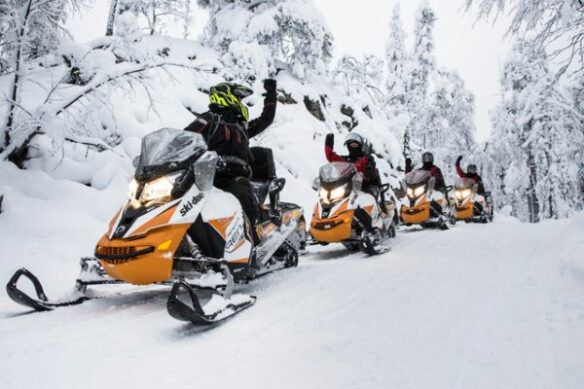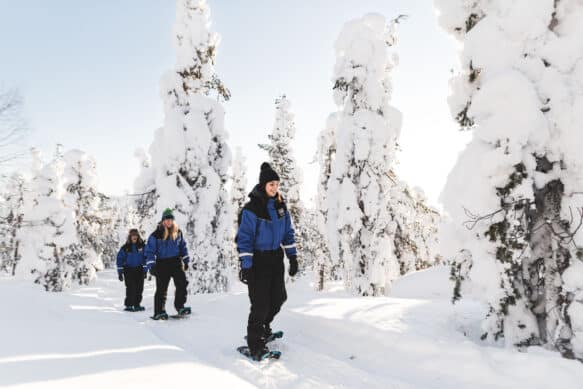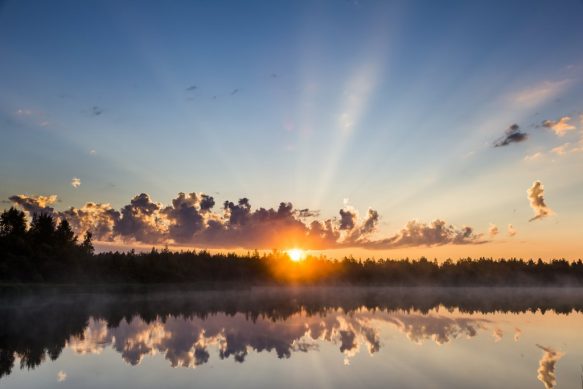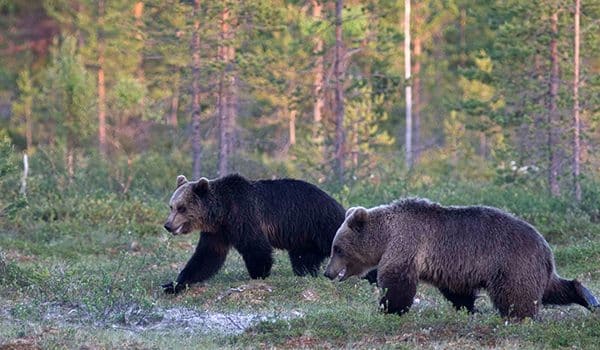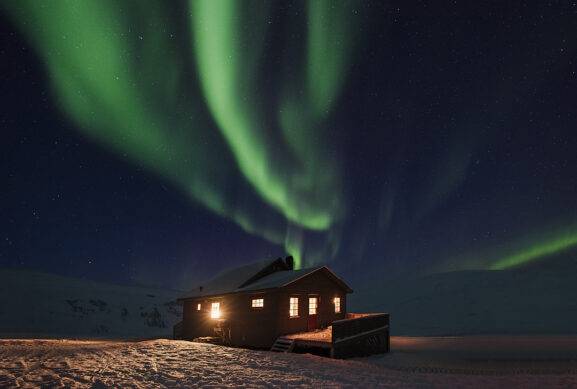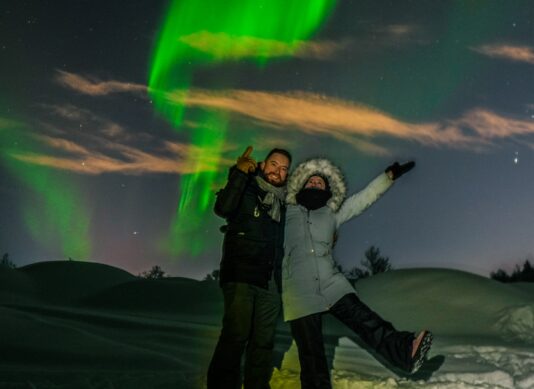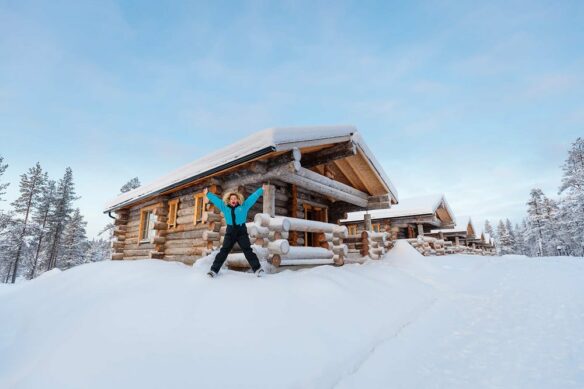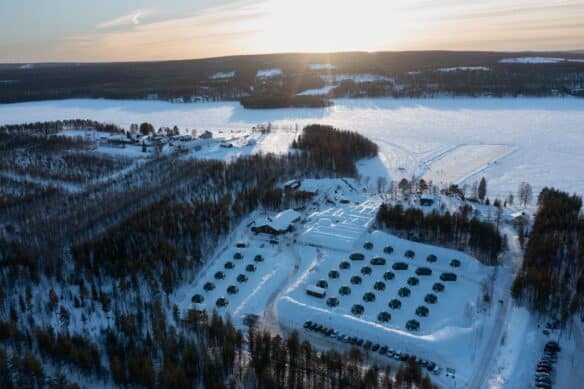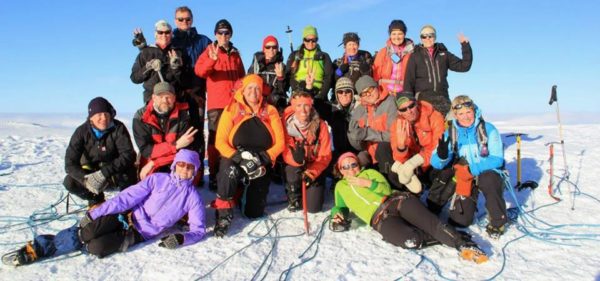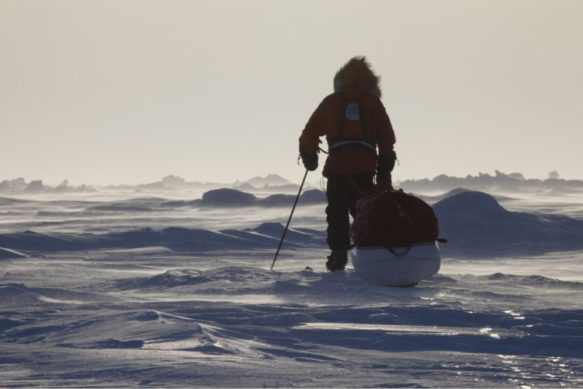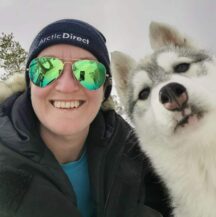As part of our mission to add new and varied destinations I travelled to Greenland’s East coast to further relationships with some suppliers who offer FIT (holiday packages) as well as some suppliers who can offer more tours for our Schools.
The trip started in Copenhagen as there are no flights to Greenland from the UK – you either need to fly via Iceland or Denmark – there are more flights from Denmark as Greenland is an autonomous Danish colony. So I took the opportunity to explore Denmark. Whilst only a flying visit I had time for giving chance for a hop-on, hop-off bus with stops at Copenhagen’s famous sights like the statue of the Little Mermaid. There was also time for a gem of a trip around the waterways with a lovely little company that offers small boat tours – with a maximum of 12 people they are much more personal than some of the giant boats that offer sightseeing tours and the afternoon tour of around an hour comes with a free glass of wine, beer or soft drink – bonus! Unfortunately time and budget didn’t allow the months required to get a table at Noma or one of the city’s other incredible Michelin starred restaurants but was recommended an amazing little taqueria actually opened by former Noma chef Rosio Sanchez and featured on the list of the World’s top 50 restaurants.
What many people don’t realise about Greenland is how large, remote and sparsely populated it is. To give you an example:
- If you overlaid the Greenland area to Europe it would stretch from the Shetland Islands to the South Coast of Spain
- In that area live 50,000 people – that’s about the population of Clacton-on-Sea
- There are about 150km of roads in the entire country and only about 60km of those are paved
- The major international airport is Kangerlussuaq – a town of 526 people. This is because it is a former US airbase which means it is one of the only places a large plane can land
Since my first stop was Nuuk, the nation’s capital I had to catch a connecting flight from Kangerlussuaq. With a population of 18,000 the city is home to around 36% of the country’s entire population.
I started my tour of Nuuk with same of the highlights – the old town’s harbour, church and a few of the museum’s including the Greenland National Museum which features many historical artefacts including many examples of national dress which can vary quite dramatically form one town to the next due to the lack of connectivity between towns. If also houses the Qilakitsoq Mummies which were found in 1972 and whilst thought to be 500 years old from the Thule culture are in remarkable condition – tattoos can be seen on the women telling of the cultural traditions in the 1400s and the clothing is so well preserved that the methods of making the garments can be deduced. They had not been embalmed but were found in a cave and preserved by the conditions. The exhibit is fascinating from an educational perspective; raising questions about the lives these people lived and the challenges they faced and difficult decisions made in relation to life and death.
I spent some time finding my bearings in the town and had an excellent fish dinner before it was time to go to bed.
The following morning I went on a tour with a couple from Germany – their plan was to fish and mine was to enjoy the scenery! We took a boat for around an hour and a saw my first iceberg – a mere baby compared to what was to come in the following days! We didn’t see a house for around 50 minutes of the journey and only one other boat – the massive mountains rise up from the sides of the fjord and there is a real sense of how small we are. Despite being August the first snow had fallen overnight and there was a small sprinkling on the largest of the mountains. Unfortunately this was falling as rain at ground level meaning we mostly stayed in the cabin for the trip. On arrival to Qooqqut I had my first experience of Greenlandic hiking. I’m not a complete novice hiker but, being from the UK, I’m used to following paths and trails. Was I in for a surprise! Our hike mostly went through blueberry and crowberry bushes – they were everywhere. There was plenty of navigating small streams as we were looking for a place to fish for Arctic Char, which was the goal of my new companions. We had fun crossing some slightly larger river stretches by jumping from rock to rock but they couldn’t find a suitable spot. Since we’d booked a table at the restaurant (one of 5 buildings in the “town”) for in an hour’s time they decided they’d fish in the fjord instead. 5 minutes later they’d caught a beautiful cod. It was to be the only catch that day (they let me have a little go but I didn’t have a nibble). So we headed for lunch. The restaurant is popular with people fishing – there is an option on the menu for their chefs to clean and cook your catch for you but (luckily) we’d preorderd the fish special which is on the menu as local fish at least 4 ways. The restaurant serves amazing Greenlandic-Thai food and the menu for our meal was Cod with a ginger sauce, trout Thai curry, halibut and seaweed and a green Thai soup with scallops and prawns served with rice and potatoes. It was certainly a trip to recommend.
The next stop for my trip was the Coastal ferry to Ilulissat. The trip takes 30 hours and is a key way the communities stay connected. With no roads between towns the only ways to get from one to another is by plane or boat. Not all towns have a high school and so some children have to board at another town for their education. As a result the boat is a mix of tourists, locals and school children travelling to or from school. The boat stops at the settlements along the way and, during the summer, a guide will lead free short tours during the stops, you are welcome to join these or stay onboard and enjoy the colourful houses dotting the shore. The boat offers 2 styles of accommodation, private ensuite cabins which can sleep up to 4 people or bunks where you get a bed in blocks of 4-6 with shared facilities. Due to a lack of space there is limited space for baggage but it is a more affordable option.
The morning of the second day onboard it becomes apparent that the glaciers of Disko bay are being approached as the icebergs become more and more frequent and much larger. They start maybe in the distance breaching the water by only 3-4 metres (10-12ft) but then you see one about the size of a car right by the boat and suddenly, before you know it they’re everywhere. For safety the boats don’t get too close to the larger ones but, by the time you reach Ilulissat, the icebergs can stretch 10 metre (30ft) or more into the air. When you remember that only 10% of the iceberg is above the water surface it strikes you just how large they are.
On arrival to the town there was just time to drop luggage at the hotel (and have a quick glace of the icebergs available from the room) before heading off an the Sermermiut settlement walk. The walk is very tame from the perspective of many Greenland walks – there is wooden walkway to follow and whilst there is some settlement ruins from the Inuit culture to see the star of the show is undoubtably the icebergs. The walk winds down to the bay with incredible views of the icebergs and, if you are lucky, it is also possible to see whales. At the edge of the fjord the path turns into steps and at the top there is a rewarding view of the sea mouth of Sermeq Kujalleq also called the Jakobshavn Glacier, one of the glaciers through which the Greenland icecap reaches the sea and the likely source of the iceberg that sank the Titanic. The glacier used to reach the mouth here but now terminates 70km back – it doubled its rate of retreat from 1996-2005. Some 35 billion tonnes of ice calve from the glacier each year and pass by this point. The views were spectacular but after a lot of pictures and a hot drink it was time to head back.
After dinner at the hotel (Reindeer – excellent!), the next activity was an evening iceberg sunset tour. A group of around 15 of us boarded a small boat which toured the icebergs giving us plenty of opportunity to see the colours change as the sun set. Fe me the highlight was a whale who decided to pop up for a breath of air – about 15ft from the boat! The guide onboard told us some facts about icebergs, from the different types of ice and how they’re formed to their properties. It was dark on return to the harbour and the transfer back to the hotel was welcome after a busy day.
The next morning my plan was an early start for breakfast before checking out as I wanted to take the opportunity of a few free hours to walk another coastal path I had been told about. The Sermermuit path is very pretty but also the most touristic thing I saw my who time in Greenland with maybe 40-50 people in the vicinity when I was there. There are 3 paths in the area; Sermermuit is the blue path but there is also a yellow path and an extended blur path path – with the dark blue path taking in a more of the compacted ice before the fjord moth and the yellow rout following the coast from the town around to give a more elevated view on the icebergs. The walk is a challenging 2.7km – there is no path as such but sporadic yellow dots on rocks to look out for and find your own way between. The walk is known to be a good spot for seeing whales but unfortunately, I didn’t see any on my walk. The walk takes around 1 ½ hours plus around 30 minutes to get to the starting point and back from it at the end.
On return from my walk I had a little lunch and then a visit to meet some of the dogs. After “incidents” in villages in the past, when the dogs used to be allowed to roam free, they now have to be chained in certain areas from the age of 6 months. In the summer times the dogs are classed as “on vacation” and, unlike European huskies, guest are not recommended to approach the dogs as the are more wolf than their European counterparts and are less predictable in their behaviour.
My evening was planned to have dinner and overnight in Iliminaq, a small settlement on the other side of the ice field. After a short delay (the boat’s skipper was not sure the weather on the other side was suitable for sailing) we set off. The sea was fine as we weaved our way through the ice field but there were some large swells on the other side for around 5 minutes. On arrival to Iliminaq I checked into my cabin – beautiful set of A-frame style cabins all looking toward the icebergs. They have floor to ceiling windows to maximize the views, a lounge area, bathroom and mezzanine bedroom with truly spectacular views of Disko Bay. Due to the slight delay I then headed to the restaurant where I had a very nice dinner of halibut followed by an artichoke dessert, I’d not had artichoke ice cream before and it was very good!
With a busy itinerary to maximise my time, I was up early the following morning and when I arrived to breakfast there was a few people stood outside the small restaurant because there were whales just a few hundred metres from the shore. I watched for a few minutes before enjoying my breakfast where I could still see then from the restaurant window. After breakfast I boarded the shuttle boat back to Ilulissat. It was the same skipper as the night before but as the weather was so much better I decided to stay outside at the back of the boat to better enjoy the view – and what a good idea that was! The journey that could be around 30 minutes actually took over a hour as the skipper was kind enough to stop on a number of occasions to allow us to enjoy the massive numbers of whales. We say 3 or 4 pods altogether including one group which was a minimum of 8 whales who stayed at the surface for around 5 minutes, an amazing sight to behold. We also saw a group of around 10 seals poke their heads up at one point. On arrival back to Ilulissat there was just time for a quick lunch (an excellent meal of snow crab) before my flight to Kangerlussuaq.
Kangerlussuaq, the major hub, was another area we had earmarked for students, although there’s no reason why it isn’t a good spot for holiday makers – particularly if they enjoy hiking or want easy access to the glacier. My first trip on this leg of the tour would be to look at a potential wilderness camping opportunity; a genuine dark sky area where it is possible to hike, kayak (Greenlandic is the origin of the work Kayak/qajaq), pick berries, mushrooms and herbs and experience clean air, clean fresh water and silence that is so silent that it sounds loud!
I had a challenging 10km hike to get to the camp I was stay at where I was meeting my guide. Led by his wife who pointed out various safe (and dangerous) wild foods along the way we forged a path through the bushes, grasses and rocks to the campsite. The whole time was with them I didn’t see a single other person – or sign of human habitation. Whilst they guide in the summer, their main source of income is from hunting and the hunting season had started the day before. Already my guide had reindeer and by the time it had been butchered, his 3 dogs had some very meaty bones for their dinner and the hide was drying stretched out in the air. The way of life has only really changed in the last 100+ years thanks to better tents and camping equipment. One of the most memorable events of the trip was peaking out of the tent at 0130 and experiencing a truly dark sky, except it wasn’t dark, the milky way was clearly visible and even the Northern Lights made a little appearance.
The following morning was an early start for the trek back – we kayaked the first km (which actually saved around 1.5km of walking and then started the hike back. My guide was actually carrying some of the butchered meat and had a 50kg backback yet I still struggled to keep up. We saw a number of Arctic hares along the way which was a pleasant surprise. On arrival back at the road my next guide was waiting for me – survival and glacier extraordinaire Emil.
The Glacier is at the end of Greenland’s longest road and the journey is around an hour. It’s a wonderful opportunity to learn about the area, the history and glaciers! I was regaled with stories from my friendly guide and driver about interesting incidents (there’s a crashed military jet on the side of the road at one point from when 3 pilots were forced to ditch in 1969 when they couldn’t find the Greenland airport in very bad weather – incidentally they all survived). I learned about moraines and what they tell us, the road (built by Volkswagen when they wanted to test their cars by driving on the glacier) and the movement of the glacier. On arrival to the glacier the information showed me just how much ice has been lost over the last 10-15 years. I’d try and explain but I’m not sure that I have the words for this empty space that just 10 years ago was all ice. We walked over the moraine (basically very large gravel mounds) and onto the ice where I was given my walking poles and crampons and I was instructed on how to put the crampons on over my boots. If you’ve not used crampons before its’s fairly easy for basic walking and we started with easy terrain; the ice had a light covering of snow and there weren’t too many steep parts. The first rule of walking on an ice cap is to stay in one line behind the guide.
The guides are highly trained and know the glacier very well so the paths they take are safe – but it certainly isn’t safe to be wandering off. Emil had one of the biggest bags I’ve ever seen, with additional pouches at the front and the side, all full of safety equipment; harnesses, emergency wraps, shelter, first aid and his satellite phone, all in case of emergency. As he established I was behaving myself (staying on his path) he started ramping up the difficulty and added paths closer to the crevasses and steeper assents and descents, as well as small “jumps” over areas of undetermined safety. He would draw 2 lines in the snow and say “don’t stand between the lines” but he was there at all times to ensure my complete safety as he straddled the gap. The ice is incredible – when we started we saw a few people who had arrived as a separate group but after that we had only 1 encounter in 8 hours; a film team doing some filming who we saw when we were having lunch. It was nice to see them as I hadn’t appreciated how big the piece of ice they were on was until they appeared on top of it as tiny little specks! Emil had brought lunch and tea and we sat eating sandwiches by a frozen lake on the glacier and enjoying the silence. We had opportunity to visit an ice camp on the glacier, something that can be visited by individuals and schools, anyone with a sense of adventure can extend their ice cap stay by booking a night in a tent actually on the glacier; what an experience! After lunch he upped the difficulty again taking me to some awe-inspiring ice ravines, some patches of blue ice and one small peak when we could see to the horizon in every direction – there was over 1,000km of ice in front of us to the North. It was a challenging hike overall at about 8km (to add to the 8km I’d done that morning) but a real opportunity to get out on the glacier. When I’d done a glacier hike before in Iceland it was only around 1 hr on the ice which went really quickly. Also the glacier in Iceland was black with the soot from the Eyjafjallajökull eruption so it didn’t really feel like a glacier in places whereas being blinded by the white in Greenland (even with sunglasses on), it was inescapable that I was on a glacier. We travelled back to the moraine and then over it to the car for the journey back. A lone reindeer made an appearance in the middle of the road on the journey back which just added to the Greenland experience!
Back in town it was time for a well-deserved dinner. Kangerlussuaq, small as it is does have a number of restaurants and I opted for one at the airport – yes really! Actually the airport is home to 2 restaurants and the restaurant I ate in was excellent. The hotel I was staying in was very basic but quite and comfortable so exhausted I went to sleep!
The following morning marked my last day in Greenland and I had an early start to visit a new camp being built. Over at the Glacier a safari style camp is being built with large safari style glamping tents being build with wooden platforms for enjoy a view of the 50m (150ft) glacier front. It was actually a very windy day so the experience wasn’t perhaps quite as good as it might be in the peak of summer but it was opportunity to see the 2 tents built so far (there will eventually be 5) as well as the restaurant tent. It’s yet another place in Greenland where it’s hard to appreciate scale but this massive ice face is certainly impressive. After the camp we made a quick stop to the Russell Glacier which involves an off-road sand dune 4wd trip to get to the ice front. Usually these are done by tundra truck – truly enormous 4wd coaches that can plough through everything and anything but we were in a small 4wd which was a lit of fun. There was a bot of sliding and we did get a little bit stuck one or twice before arriving at the massive glacier front. The ice here is a sheer wall of up to 60m (almost 200ft). You can hear the ice creaking, crunching and clinking – even over the wind that was blowing is sounded a little like ice cubes in a glass but on a much bigger scale. The guide explained that the ice here is under such pressure that it rarely just breaks off but can actually explode off. As such there are recommended distances to keep from the ice face for safety. Trips here can include a BBQ and usually a hike to see some of the impressive waterfalls in the area. However I had a flight to catch and we started back to the airport. On this journey I was lucky enough to see Musk Ox, Arctic hares and a group of 8 reindeer – thank you Greenland for a wonderful last memory!
Want to visit? Check out our Greenland holiday packages.

